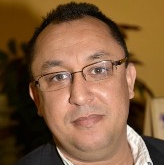Recent Advances in Liver Repair Strategies
A topical collection in Cells (ISSN 2073-4409). This collection belongs to the section "Cellular Pathology".
Viewed by 7082Editor
Interests: liver cell therapy; mesenchymal stem cells; liver regeneration; hepatogenic differentiation; liver defects; cell therapy; liver cell types
Special Issues, Collections and Topics in MDPI journals
Topical Collection Information
Dear Colleagues,
The liver is a masterful organ that orchestrates the coordination of over 500 functions essential for life. Compared with other organs, the liver displays a high ability to regenerate itself—a well-conserved feature from fish to humans—which is crucial to preserve the coordination of those critical functions. Because such a complex and critical organ may experience several problems, keeping the liver healthy is a necessity to maintain its regeneration potential. Once this ability is altered, significant structural and functional changes occur that could alter other organs.
Liver diseases—either inherited or acquired—are continuously increasing, and represent a significant cause of mortality worldwide. Orthotopic liver transplantation (OLT) remains the gold standard therapeutic option. Unfortunately, it is not widely accessible to all patients for several reasons, among which is the significantly increased donor scarcity. Accordingly, investigations are continuously conducted to develop novel and innovative therapeutic strategies that could support and/or substitute OLT. This could be achieved via the improvement and strengthening of our knowledge on liver diseases, as well as on the underlined cellular and molecular mechanisms hampering the liver regeneration potential.
This Topical Collection will address all aspects related to liver biology, liver diseases, and early proof of concept investigations that are developing novel clinical solutions. It welcomes high-quality basic and clinical research papers as well as reviews that emphasize these issues.
Dr. Mustapha Najimi
Guest Editor
Manuscript Submission Information
Manuscripts should be submitted online at www.mdpi.com by registering and logging in to this website. Once you are registered, click here to go to the submission form. Manuscripts can be submitted until the deadline. All submissions that pass pre-check are peer-reviewed. Accepted papers will be published continuously in the journal (as soon as accepted) and will be listed together on the collection website. Research articles, review articles as well as short communications are invited. For planned papers, a title and short abstract (about 100 words) can be sent to the Editorial Office for announcement on this website.
Submitted manuscripts should not have been published previously, nor be under consideration for publication elsewhere (except conference proceedings papers). All manuscripts are thoroughly refereed through a single-blind peer-review process. A guide for authors and other relevant information for submission of manuscripts is available on the Instructions for Authors page. Cells is an international peer-reviewed open access semimonthly journal published by MDPI.
Please visit the Instructions for Authors page before submitting a manuscript. The Article Processing Charge (APC) for publication in this open access journal is 2700 CHF (Swiss Francs). Submitted papers should be well formatted and use good English. Authors may use MDPI's English editing service prior to publication or during author revisions.
Keywords
- liver
- liver diseases
- signaling pathway
- cell therapy
- tissue engineering
- gene therapy
- transplantation
- stem cells
- tissue regeneration








